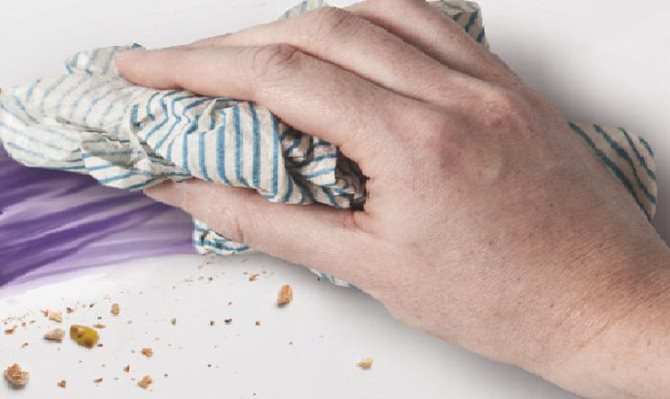The Microbiological Status of Household Dishcloths and Associated Consumer Hygiene Practices

- Project start date: 1 August 2011
- Project status: Completed
- Project type: Food safety
- Discipline: Microbiology and food hygiene
- Author/s: Ms Martine De Boer, Eolas International Research Ltd., Co. Cork
- Collaborator/s: Ms Janet Francis and Ms. Catherine Cockcroft, EXOVA, Guildford
Research objective
This project aimed to investigate the types and microbiological status of domestic dishcloths in use across the island of Ireland. It sought to establish the prevalence of potentially harmful microorganisms on these dishcloths, evaluate common cleaning regimes' effectiveness, and assess the risk of spreading pathogens from contaminated dishcloths to kitchen surfaces.
Outputs
Research report
- Title: How clean is your dishcloth?
- Date: 10 July 2015
- Summary: This study investigated the microbiological contamination of “in-use” household dishcloths along with consumer demographic and behavioural findings in relation to the use and cleaning of these dishcloths.
- Findings:
Microbial contamination
- E. coli was found on 27.5% of dishcloths, and Listeria spp. on 13.5%, including Listeria monocytogenes on 3% of dishcloths.
- No Salmonella or Campylobacter spp. were detected.
- Wet dishcloths had higher bacterial counts, and dishcloths used to wipe raw meat or fish had a higher likelihood of contamination.
Consumer behavior
- Many consumers are unaware of the contamination risk. The majority use dishcloths to clean surfaces that contact food, and 36% replace or wash their dishcloths every six days or more frequently.
- 62% of consumers washed their dishcloths in a washing machine, and 36% soaked them in bleach, but other methods such as rinsing with water or washing with detergent were less effective.
Decontamination effectiveness
- Reliable methods for decontaminating dishcloths include washing in a washing machine at 30-60°C and boiling for 15 minutes.
- Bleach and washing up liquid were only effective when combined with hot water (60°C) and used for prolonged periods (2 hours).
- Rinsing under hot water or using a dishwasher without significant cleaning did not consistently eliminate pathogens.
Bacteria transfer
- Contaminated dishcloths spread bacteria, especially E. coli and Salmonella, to kitchen surfaces (wood, granite, stainless steel, melamine), raising the risk of foodborne illnesses.
- Recommendations:
These findings emphasise the need for better kitchen hygiene practices to reduce the spread of harmful bacteria in households. Consumer should be advised to:
- Clean or replace dishcloths every two days or immediately after wiping high-risk food residues (e.g., raw meat, eggs, butter/oil).
- Use effective decontamination methods like boiling for 15 minutes or washing in a machine at 30-60°C.
- Allow dishcloths to dry between uses and practice regular handwashing after handling contaminated dishcloths.
You can download the report below.
Similar research
- Risk profiling Listeria in ready-to eat foods (RTE) and determination of control strategies and prac (2014)
- Emerging issues: an analysis for Verocytotoxigenic Escherichia coli on the island of Ireland (2014)
- A study of domestic fridges on the island of Ireland (2013)
- Communicating to Consumers about Food Hazards in the Home (2010)




